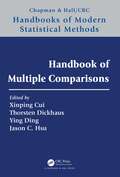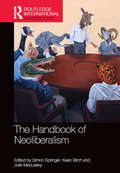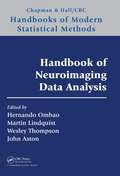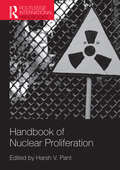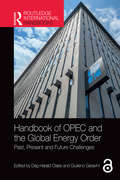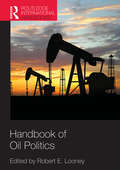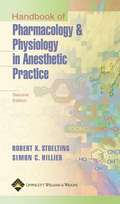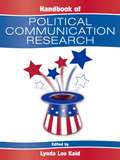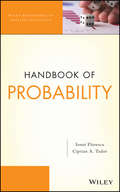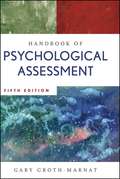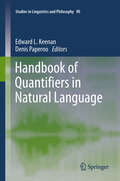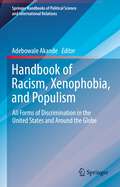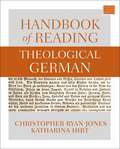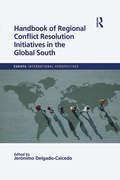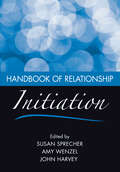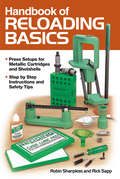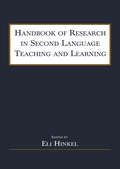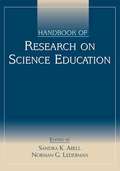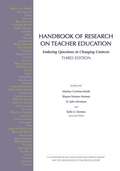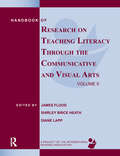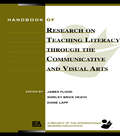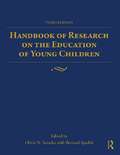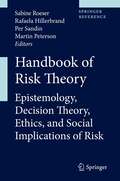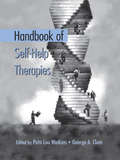- Table View
- List View
Handbook of Multiple Comparisons (Chapman & Hall/CRC Handbooks of Modern Statistical Methods)
by Xinping Cui, Thorsten Dickhaus, Ying Ding, Jason C. HsuWritten by experts that include originators of some key ideas, chapters in the Handbook of Multiple Testing cover multiple comparison problems big and small, with guidance toward error rate control and insights on how principles developed earlier can be applied to current and emerging problems. Some highlights of the coverages are as follows. Error rate control is useful for controlling the incorrect decision rate. Chapter 1 introduces Tukey's original multiple comparison error rates and point to how they have been applied and adapted to modern multiple comparison problems as discussed in the later chapters. Principles endure. While the closed testing principle is more familiar, Chapter 4 shows the partitioning principle can derive confidence sets for multiple tests, which may become important as the profession goes beyond making decisions based on p-values. Multiple comparisons of treatment efficacy often involve multiple doses and endpoints. Chapter 12 on multiple endpoints explains how different choices of endpoint types lead to different multiplicity adjustment strategies, while Chapter 11 on the MCP-Mod approach is particularly useful for dose-finding. To assess efficacy in clinical trials with multiple doses and multiple endpoints, the reader can see the traditional approach in Chapter 2, the Graphical approach in Chapter 5, and the multivariate approach in Chapter 3. Personalized/precision medicine based on targeted therapies, already a reality, naturally leads to analysis of efficacy in subgroups. Chapter 13 draws attention to subtle logical issues in inferences on subgroups and their mixtures, with a principled solution that resolves these issues. This chapter has implication toward meeting the ICHE9R1 Estimands requirement. Besides the mere multiple testing methodology itself, the handbook also covers related topics like the statistical task of model selection in Chapter 7 or the estimation of the proportion of true null hypotheses (or, in other words, the signal prevalence) in Chapter 8. It also contains decision-theoretic considerations regarding the admissibility of multiple tests in Chapter 6. The issue of selected inference is addressed in Chapter 9. Comparison of responses can involve millions of voxels in medical imaging or SNPs in genome-wide association studies (GWAS). Chapter 14 and Chapter 15 provide state of the art methods for large scale simultaneous inference in these settings.
Handbook of Neoliberalism
by Simon Springer Kean Birch Julie MacLeavyNeoliberalism is easily one of the most powerful discourses toemerge within the social sciences in the last two decades, and the number of scholars who write about this dynamic and unfolding process of socio-spatial transformation isastonishing. Even more surprising though is that there has, until now, not been an attempt to provide a wide-ranging volume that engages with the multiple registers in which neoliberalism has evolved. The Routledge Handbook of Neoliberalism seeks to offer a comprehensive overview of the phenomenon of neoliberalism by examining the range of ways that it has been theorized, promoted, critiqued, and put into practice in a variety of geographical locations and institutional frameworks. With contributions from over 50 leadingauthors working at institutions around the world the volumes seven sections will offer a systematic overview of neoliberalism’s origins, political implications, social tensions, spaces, natures and environments, and aftermaths in addressing ongoing and emerging debates. The volume aims to provide the first comprehensive overview of the field and to advance the established and emergent debates in a field that has grown exponentially over the past two decades, coinciding with the meteoric rise of neoliberalism as a hegemonic ideology, state form, policy and program, and governmentality. It includes a substantive introductory chapter and will serve as an invaluable resource for undergraduates, graduate students, and professional scholars alike.
Handbook of Neuroimaging Data Analysis (Chapman & Hall/CRC Handbooks of Modern Statistical Methods)
by John Aston Hernando Ombao Martin Lindquist Wesley ThompsonThis book explores various state-of-the-art aspects behind the statistical analysis of neuroimaging data. It examines the development of novel statistical approaches to model brain data. Designed for researchers in statistics, biostatistics, computer science, cognitive science, computer engineering, biomedical engineering, applied mathematics, physics, and radiology, the book can also be used as a textbook for graduate-level courses in statistics and biostatistics or as a self-study reference for Ph.D. students in statistics, biostatistics, psychology, neuroscience, and computer science.
Handbook of Nuclear Proliferation (Routledge International Handbooks Ser.)
by Harsh V. PantThe chapters of this proposed volume are intended to shed light on the diverse themes surrounding this very important issue area in international security. Each of the six major sections addresses an aspect of nuclear proliferation that will be critical in determining the future trajectory of global politics in the years to come. The first section examines the major thematic issues underlying the contemporary discourse on nuclear proliferation. How do we understand this period in proliferation? What accounts for a taboo on the use of nuclear weapons so far and will it survive? What is the present state of nuclear deterrence models built during the Cold War? What is the relationship between the pursuit of civilian nuclear energy and the risks of proliferation? Why are we witnessing a move away from non-proliferation to counter-proliferation? The second section gives an overview of the evolving nuclear policies of the five established nuclear powers: the USA, Russia, the United Kingdom, France and the People's Republic of China. Section three looks at the three de facto nuclear states: India, Pakistan and Israel. The fourth section examines the three problem areas in the proliferation matrix today – Iran, North Korea and the potent mix of non-state actors and nuclear weapons. The fifth section sheds light on an important issue often ignored during discussions of nuclear proliferation – cases where states have made a deliberate policy choice of either renouncing their nuclear weapons programme, or have decided to remain a threshold state. The cases of South Africa, Egypt and Japan will be the focus of this section. The final section will examine the present state of the global nuclear non-proliferation regime, which most observers agree is currently facing a crisis of credibility. The three pillars of this regime – the Nuclear Non-Proliferation Treaty (NPT), the Comprehensive Test Ban Treaty (CTBT), and the Fissile Material Cut-Off Treaty (FMCT) – will be examined. This is followed by an analysis of the present trends and prospects for US-Russia nuclear arms control. The impact of missile defenses and the US-India civilian nuclear energy co-operation pact will be examined so as to ascertain whether they have weakened or strengthened the global non-proliferation regime. The chapters in this volume aim to document the increasing complexity of the global nuclear proliferation dynamic and the inability of the international community to come to terms with a rapidly changing strategic milieu. The future, in all likelihood, will be very different from the past, and the chapters in this volume will try to develop a framework that may help gain a better understanding of the forces that will shape the nuclear proliferation debate in the years to come. Proposed Contents Introduction – Overview Part 1: Thematic Issues The Second Nuclear Age The Nuclear Taboo Nuclear Deterrence Nuclear Energy and Non-Proliferation Non-Proliferation and Counter Proliferation Non-State Actors and Nuclear Weapons Part 2: The Five Nuclear Powers USA Russia United Kingdom France People's Republic of China Part 3: De Facto Nuclear States India Pakistan Israel Part 4: The ‘Problem’ States Iran North Korea Part 5: The ‘Threshold’ States South Africa Japan Egypt Part 6: The Global Non-Proliferation Regime The NPT The CTBT The FMCT US-Russia Nuclear Arms Control The Impact of Missile Defenses The US-India Nuclear Deal The Future: What It May Hold In Store Conclusion
Handbook of OPEC and the Global Energy Order: Past, Present and Future Challenges (Routledge International Handbooks)
by Dag Harald Claes Giuliano GaraviniThe Organization of the Petroleum Exporting Countries (OPEC), celebrating its 60th anniversary in 2020, is one of the most recognizable acronyms in international politics. The organization has undergone decades of changing importance, from political irrelevance to the spotlight of world attention and back; and from economic boom for its members to deep political and financial crisis. This handbook, with chapters provided by scholars and analysts from different backgrounds and specializations, discusses and analyzes the history and development of OPEC, its global importance, and the role it has played, and still plays, in the global energy market. Part I focuses on the relationship between OPEC and its member states. Part II examines the relationship between OPEC and its customers, the consuming countries and their governments, while Part III addresses the relationship between OPEC and its competitors and potential partners, the non-OPEC producers, and the international oil companies. The final section, Part IV, looks at OPEC and the governance of international energy.
Handbook of Oil Politics (Routledge International Handbooks Ser.)
by Robert E. LooneyThese days, one would have a difficult time picking up a newspaper, or watching a newscast that did not have a lead story dealing with some aspect of oil. From instability in the Middle East, to stock market crashes and concerns over the health of the world economy, to wars that seem to break out unexpectedly around the world, to discussions of global warming, and even speculation over the fate of mankind, oil is usually lurking somewhere in the background. To many, oil markets and their linkages to a whole spectrum of events remain something of a mystery. Unfortunately, most of the easily obtained information on oil is deeply flawed. Whole web-conspiracy sites depict ruthless insiders and reckless dictators manipulating energy markets at will. The 30 essays in this volume, written by the leading experts in the field, attempt to set the record straight. While their assessments may lack the sensationalism of many popular pundits, serious readers will find their insights invaluable in the years to come in providing a framework for understanding many of the events of the day. The volume is divided into sections. Part I provides a broad overview of the political dimensions underlying the supply of oil. Some of the key questions addressed include: is the world running out of oil? And if so, is the cause physical scarcity or political/policy failure? Why are many of the oil-producing countries in the developing world so unstable? Can oil markets be made to provide more stability to the world system? Part II examines some of the political responses to oil-related developments. Here, the key questions concern the role of the political process in the development of alternative sources of energy. The various means through which countries approach their energy security is assessed, as is the problem of climate change. The section ends with the provocative question, do governments really need to go to war for oil? Oil production, energy markets, and the political environment produce distinct regional patterns. Part III examines oil and political power in Africa, Latin America, the Middle East and South-East Asia. Part IV expands some of the main regional themes through a series of case studies on specific countries: Iraq, Iran, Saudi Arabia, Egypt, Russia and Brazil. A final section looks to the future: will the oil curse continue for many countries? How will the growth and expansion of China affect oil prices and availabilities? Will oil-based sovereign wealth funds contribute to global stability or will they create increased political tensions between consuming and producing countries? Will volatile oil markets undermine the US dollar as well as the global financial system? Perhaps appropriately, the volume ends with an assessment of the future of oil in a carbon constrained world. All in all, the essays in this volume cover the whole spectrum of the politics of oil. Hopefully they will help shed light on this vital, yet still often misunderstood topic. The book does not represent any particular political or ideological position. Instead, each author has sought to objectively seek a deeper understanding as to the complexity and subtlety of forces that have all too often eluded policymakers around the world.
Handbook of Pharmacology and Physiology in Anesthetic Practice
by Robert K. Stoelting Simon C. HillierDesigned for quick reference in the operating room or rapid review for board exams, this handbook presents the most critical clinical information from the newly updated Fourth Edition of Pharmacology and Physiology in Anesthetic Practice.
Handbook of Political Communication Research (Routledge Communication Series)
by Lynda Lee KaidThe Handbook of Political Communication Research is a benchmark volume, defining the most important and significant thrusts of contemporary research and theory in political communication. Editor Lynda Lee Kaid brings together exemplary scholars to explore the current state of political communication research in each of its various facets. Reflecting the interdisciplinary nature of political communication scholarship, contributions represent research coming from communication, political science, journalism, and marketing disciplines, among others. The Handbook demonstrates the broad scope of the political communication discipline and emphasizes theoretical overviews and research synthesis, with each chapter providing discussion of the major lines of research, theory, and findings for the area of concern. Chapters are organized into sections covering: *The theoretical background, history, structure, and diversity of political communication; *Messages predominant in the study of political communication, ranging from classical rhetorical modes to political advertising and debates; *News media coverage of politics, political issues, and political institutions; *Public opinion and the audiences of political communication;*European and Asian perspectives on political communication; and*Trends in political communication study, including the Internet, and its role in changing the face of political communication. As a comprehensive and thorough examination of the political communication discipline--the first in over two decades--this Handbook is a "must-have" resource for scholars and researchers in political communication, mass communication, and political science. It will also serve readers in public opinion, political psychology, and related areas.
Handbook of Probability
by Ionut Florescu Ciprian A. TudorTHE COMPLETE COLLECTION NECESSARY FOR A CONCRETE UNDERSTANDING OF PROBABILITYWritten in a clear, accessible, and comprehensive manner, the Handbook of Probability presents the fundamentals of probability with an emphasis on the balance of theory, application, and methodology. Utilizing basic examples throughout, the handbook expertly transitions between concepts and practice to allow readers an inclusive introduction to the field of probability.The book provides a useful format with self-contained chapters, allowing the reader easy and quick reference. Each chapter includes an introduction, historical background, theory and applications, algorithms, and exercises. The Handbook of Probability offers coverage of:Probability Space Probability MeasureRandom VariablesRandom Vectors in RnCharacteristic FunctionMoment Generating FunctionGaussian Random VectorsConvergence TypesLimit TheoremsThe Handbook of Probability is an ideal resource for researchers and practitioners in numerous fields, such as mathematics, statistics, operations research, engineering, medicine, and finance, as well as a useful text for graduate students.
Handbook of Psychological Assessment (5th Edition)
by Gary Groth-MarnatThis fifth edition reflects the more extensive use of psychological assessment for a wide variety of populations and the importance of working sensitively with diverse populations.
Handbook of Quantifiers in Natural Language
by Edward Keenan Denis PapernoCovering a strikingly diverse range of languages from 12 linguistic families, this handbook is based on responses to a questionnaire constructed by the editors. Focusing on the formation, distribution and semantic interpretation of quantificational expressions, the book explores 17 languages including German, Italian, Russian, Mandarin Chinese, Malagasy, Hebrew, Pima, Basque, and more. The language data sets enable detailed crosslinguistic comparison of numerous features. These include semantic classes of quantifiers (generalized existential, generalized universal, proportional, partitive), syntactically complex quantifiers (intensive modification, Boolean compounding, exception phrases) and several others such as quantifier scope ambiguities, quantifier float, and binary quantifiers. Its theory-independent content extends earlier work by Matthewson (2008) and Bach et al. (1995), making this handbook suitable for linguists, semanticians, philosophers of language and logicians alike.
Handbook of Racism, Xenophobia, and Populism: All Forms of Discrimination in the United States and Around the Globe (Springer Handbooks of Political Science and International Relations)
by Adebowale AkandeThis handbook presents the roots of symbolic racism as partly in both anti-black antagonism and non-racial conservative attitudes and values, representing a new form of racism independent of older racial and political attitudes. By doing so, it homes in on certain historical incidents and episodes and presents a cogent analysis of anti-black, Jim Crowism, anti-people of color (Black, Latino, Native Americans), and prejudice that exists in the United States and around the world as a central tenet of racism. The book exposes the reader to the nature and practice of stereotyping, negative bias, social categorization, modern forms of racism, immigration law empowerment, racialized incarceration, and police brutality in the American heartland. It states that several centuries of white Americans’ negative socializing culture marked by widespread negative attitudes toward African Americans, are not eradicated and are still rife. Further, the book provides a panoramic view of trends of racial discrimination and other negative and desperate challenges that Black, Indigenous, and People of Color face across the world. Finally, the volume examines xenophobia, racism, prejudice, and stereotyping in different contexts, including topics such as Covid-19, religion and racism, information manipulation, and populism. The book, therefore, is a must-read for students, researchers, and scholars of political science, psychology, history, sociology, communications/media studies, diplomatic studies, and law in general, as well as ethnic and racial studies, American politics, global affairs, populism, and discrimination in particular.
Handbook of Reading Theological German
by Christopher Ryan Jones Katharina HirtThe Handbook of Reading Theological German is the premier resource for equipping those interested in reading and translating original German source materials and preparing academics for German comprehension examination. The book is ideal for students in biblical studies, church history, Jewish studies, and theology. Coauthored by Katharina Hirt, a native German speaker and professional linguist, and Christopher Ryan Jones, a native English speaker and doctoral candidate in biblical studies, this collaboration draws on the latest developments in linguistics to present a cutting-edge teaching methodology for graduate students learning to read German for research.Attuned to the specific needs of English speakers learning German, this handbook is well suited for independent study or for use in the classroom. Providing abundant exercises and readings, Jones and Hirt&’s work provides an excellent entry point for students required to learn theological German.The Handbook of Reading Theological German provides:An introduction to German grammarA demonstration of the role that German theology has had in the development of modern Jewish and Christian practices.Guided readings and biographies of six major German theologians and philosophersFurther, advanced readings with minimal guidance from contemporary authors in the areas of Hebrew Bible, New Testament, Jewish studies, church history, and theology, so that students can focus on literature from their chosen field of study
Handbook of Regional Conflict Resolution Initiatives in the Global South (Europa International Perspectives)
by Jerónimo Delgado-CaicedoDuring the first half of the twentieth century, the international system was largely dominated by the USA and the colonial powers of western Europe. After the two world wars, the political and economic dominance of these states guaranteed them and their allies an almost complete control of world politics. However, as it is the norm in the international system, power structures are not immutable. After the end of the Cold War, rapid changes to the existing international hierarchies took place, as new countries from the so-called ‘‘developing world’’ began to emerge as crucial actors capable of questioning and altering the power dynamics of the world. It is therefore unthinkable to ignore emerging countries such as Russia, the People’s Republic of China, India, Brazil or South Africa in the decision-making process in today’s world order. In addition, there is a group of smaller, yet increasingly important countries that, while acknowledging their inability radically to change the rules of the international system, are still eager to shift power relations and enhance their influence in the world. Argentina, Colombia, Egypt, Indonesia, Iran, South Korea, Mexico, Nigeria, Pakistan, Saudi Arabia, Turkey and Vietnam are generally recognised as part of this grouping of emerging powers from the Global South. While there is a consensus amongst academics that emerging powers from the Global South must have a stabilising role within their own regions, previous analyses have focused primarily on the impact that emerging powers have had in their own regions’ conflict resolution initiatives. This volume, instead, aims to go beyond these analyses and provide new insights regarding the effect that this stabilising role has on the continental and global positioning of emerging powers. In other words, this book explores the relation between a country’s involvement in conflict resolution initiatives and its positioning in the international system. The volume will contribute to this approach using the perspective of academics and practitioners from countries of the Global South, particularly from states that have strengthened - or sometimes weakened - their position in the international hierarchy of power through a leading role in regional conflict resolution initiatives.
Handbook of Relationship Initiation
by John Harvey Amy Wenzel Susan SprecherThe Handbook of Relationship Initiation is the first volume to focus specifically on the very beginning stage of relationships – their origin. In this Handbook, leading scholars on relationships review the literature on various processes related to the initiation of relationships: how people meet, communicate for the first time, and begin to define themselves as being in a relationship. Topics include attraction, mate selection, influence of social networks on relationship initiation, initiation over the internet, hook-ups among young adults, and flirting and opening gambits. In addition, the dark side of relationship initiation is considered, including unwanted relationship pursuit and barriers to relationship initiation including social anxiety. This volume provides an overdue synthesis of the literature on this topic. It is especially timely in view of the growing prevalence on relationship initiation online, through matchmaking and other social networking sites, which has increased awareness that science can be used to understand, create, and facilitate compatible matching. This Handbook provides an essential resource for an interdisciplinary range of researchers and students who study relationships, including social psychologists, communication scientists and scholars of marriage and the family.
Handbook of Reloading Basics
by Rick Sapp Robin SharplessReady, set, reload! With ammo shortages on retailer's shelves, unprecedented firearms sales across the country, and burgeoning numbers of new shooters, reloading is growing in leaps and bounds. Handbook of Reloading Basics, written by industry experts Robin Sharpless and Rick Sapp, is aimed squarely at the new handloaders and simplifies both the equipment and the process. Inside this bench-handy reference you'll find: Step-by-step instructions for reloading metallic cartridges and modern shotshells Press selection--single-stage, turrets and progressives explained Component breakdown--primers, cases, hulls, powder, wads and bullets Dozens of illustrative photos and a comprehensive resource listing. Before you buy your first press, before you polish your brass or sort your shotshell hulls you must read Handbook of Reloading Basics. This invaluable reference is the one to get you started and keep you loading round after round.
Handbook of Research in Second Language Teaching and Learning: Volume 2 (Esl And Applied Linguistics Professional Ser.)
by Eli HinkelThis landmark volume provides a broad-based, state-of-the-art overview of current knowledge and research into second language teaching and learning. Fifty-seven chapters are organized in eight thematic sections:*social contexts of second language learning;*research methodologies in second-language learning, acquisition, and teaching;*contributions of applied linguistics to the teaching and learning of second language skills;*second language processes and development;*teaching methods and curricula;*issues in second or foreign language testing and assessment;*identity, culture, and critical pedagogy in second language teaching and learning; and*important considerations in language planning and policies.The Handbook of Research in Second Language Teaching and Learning is intended for researchers, practitioners, graduate students, and faculty in teacher education and applied linguistics programs; teachers; teacher trainers; teacher trainees; curriculum and material developers; and all other professionals in the field of second language teaching and learning.
Handbook of Research on Science Education
by Norman G. Lederman Sandra K. AbellThis state-of-the art research Handbook provides a comprehensive, coherent, current synthesis of the empirical and theoretical research concerning teaching and learning in science and lays down a foundation upon which future research can be built. The contributors, all leading experts in their research areas, represent the international and gender diversity that exists in the science education research community. As a whole, the Handbook of Research on Science Education demonstrates that science education is alive and well and illustrates its vitality. It is an essential resource for the entire science education community, including veteran and emerging researchers, university faculty, graduate students, practitioners in the schools, and science education professionals outside of universities. The National Association for Research in Science Teaching (NARST) endorses the Handbook of Research on Science Education as an important and valuable synthesis of the current knowledge in the field of science education by leading individuals in the field. For more information on NARST, please visit: http://www.narst.org/.
Handbook of Research on Teacher Education: Enduring Questions in Changing Contexts
by Marilyn Cochran-Smith Sharon Feiman-Nemser D. John McIntyre Kelly E. DemersCo-Published by Routledge/Taylor & Francis Group and the Association of Teacher Educators. The Handbook of Research on Teacher Education was initiated to ferment change in education based on solid evidence. The publication of the First Edition was a signal event in 1990. While the preparation of educators was then – and continues to be – the topic of substantial discussion, there did not exist a codification of the best that was known at the time about teacher education. Reflecting the needs of educators today, the Third Edition takes a new approach to achieving the same purpose. Beyond simply conceptualizing the broad landscape of teacher education and providing comprehensive reviews of the latest research for major domains of practice, this edition: stimulates a broad conversation about foundational issues brings multiple perspectives to bear provides new specificity to topics that have been undifferentiated in the past includes diverse voices in the conversation. The Editors, with an Advisory Board, identified nine foundational issues and translated them into a set of focal questions: What’s the Point?: The Purposes of Teacher Education What Should Teachers Know? Teacher Capacities: Knowledge, Beliefs, Skills, and Commitments Where Should Teachers Be Taught? Settings and Roles in Teacher Education Who Teaches? Who Should Teach? Teacher Recruitment, Selection, and Retention Does Difference Make a Difference? Diversity and Teacher Education How Do People Learn to Teach? Who’s in Charge? Authority in Teacher Education How Do We Know What We Know? Research and Teacher Education What Good is Teacher Education? The Place of Teacher Education in Teachers’ Education. The Association of Teacher Educators (ATE) is an individual membership organization devoted solely to the improvement of teacher education both for school-based and post secondary teacher educators. For more information on our organization and publications, please visit: www.ate1.org
Handbook of Research on Teaching Literacy Through the Communicative and Visual Arts, Volume II: A Project of the International Reading Association
by James Flood Diane Lapp Shirley Brice HeathThe Handbook of Research on Teaching Literacy Through the Communicative and Visual Arts, Volume II brings together state-of-the-art research and practice on the evolving view of literacy as encompassing not only reading, writing, speaking, and listening, but also the multiple ways through which learners gain access to knowledge and skills. It forefronts as central to literacy education the visual, communicative, and performative arts, and the extent to which all of the technologies that have vastly expanded the meanings and uses of literacy originate and evolve through the skills and interests of the young. A project of the International Reading Association, published and distributed by Routledge/Taylor & Francis. Visit http://www.reading.org for more information about Internationl Reading Associationbooks, membership, and other services.
Handbook of Research on Teaching Literacy Through the Communicative and Visual Arts: Sponsored by the International Reading Association
by James Flood Diane Lapp Shirley Brice HeathIn an era characterized by the rapid evolution of the concept of literacy, the Handbook of Research on Teaching Literacy Through the Communicative and Visual Arts focuses on multiple ways in which learners gain access to knowledge and skills. The handbook explores the possibilities of broadening current conceptualizations of literacy to include the full array of the communicative arts (reading, writing, speaking, listening, viewing) and to focus on the visual arts of drama, dance, film, art, video, and computer technology. The communicative and visual arts encompass everything from novels and theatrical performances to movies and video games. In today's world, new methods for transmitting information have been developed that include music, graphics, sound effects, smells, and animations. While these methods have been used by television shows and multimedia products, they often represent an unexplored resource in the field of education. By broadening our uses of these media, formats, and genres, a greater number of students will be motivated to see themselves as learners. In 64 chapters, organized in seven sections, teachers and other leading authorities in the field of literacy provide direction for the future: I. Theoretical Bases for Communicative and Visual Arts Teaching Paul Messaris, Section Editor II. Methods of Inquiry in Communicative and Visual Arts Teaching Donna Alvermann, Section Editor III. Research on Language Learners in Families, Communities, and Classrooms Vicki Chou, Section Editor IV. Research on Language Teachers: Conditions and Contexts Dorothy Strickland, Section Editor V. Expanding Instructional Environments: Teaching, Learning, and Assessing the Communicative and Visual Arts Nancy Roser, Section Editor VI. Research Perspectives on the Curricular, Extracurricular, and Policy Perspectives James Squire, Section Editor VII. Voices from the Field Bernice Cullinan and Lee Galda, Section Editors The International Reading Association has compiled in the Handbook of Research on Teaching Literacy Through the Communicative and Visual Arts an indispensable set of papers for educators that will enable them to conceptualize literacy in much broader contexts than ever before. The information contained in this volume will be extremely useful in planning literacy programs for our students for today and tomorrow.
Handbook of Research on the Education of Young Children
by Olivia N. Saracho Bernard SpodekThe Handbook of Research on the Education of Young Children is the essential reference on research on early childhood education throughout the world. This singular resource provides a comprehensive overview of important contemporary issues as well as the information necessary to make informed judgments about these issues. The field has changed significantly since the publication of the second edition, and this third edition of the handbook takes care to address the entirety of vital new developments. A valuable tool for all those who work and study in the field of early childhood education, this volume addresses critical, cutting edge research on child development, curriculum, policy, and research and evaluation strategies. With a multitude of new and updated chapters, The Handbook of Research on the Education of Young Children, 3rd Edition makes the expanding knowledge base related to early childhood education readily available and accessible.
Handbook of Risk Theory
by Martin Peterson Sabine Roeser Per Sandin Rafaela HillerbrandRisk has become one of the main topics in fields as diverse as engineering, medicine and economics, and it is also studied by social scientists, psychologists and legal scholars. But the topic of risk also leads to more fundamental questions such as: What is risk? What can decision theory contribute to the analysis of risk? What does the human perception of risk mean for society? How should we judge whether a risk is morally acceptable or not? Over the last couple of decades questions like these have attracted interest from philosophers and other scholars into risk theory. This handbook provides for an overview into key topics in a major new field of research. It addresses a wide range of topics, ranging from decision theory, risk perception to ethics and social implications of risk, and it also addresses specific case studies. It aims to promote communication and information among all those who are interested in theoetical issues concerning risk and uncertainty. This handbook brings together internationally leading philosophers and scholars from other disciplines who work on risk theory. The contributions are accessibly written and highly relevant to issues that are studied by risk scholars. We hope that the Handbook of Risk Theory will be a helpful starting point for all risk scholars who are interested in broadening and deepening their current perspectives.
Handbook of Self-Help Therapies
by Patti Lou Watkins George A. ClumThis volume constitutes the first solidly research-grounded guide for practitioners wending their way through the new maze of self-help approaches. The Handbook of Self-Help Therapies summarizes the current state of our knowledge about what works and what does not, disorder by disorder and modality by modality. Among the covered topics are: self-regulation theory; anxiety disorders; depression; childhood disorders; eating disorders; sexual dysfunctions; insomnia; problem drinking; smoking cessation; dieting and weight loss. Comprehensive in its scope, this systematic, objective assessment of self-help treatments will be invaluable for practitioners, researchers and students in counseling psychology, psychiatry and social work, health psychology, and behavioral medicine.
Handbook of Semiotics (Advances in Semiotic)
by Winfried Nöth"This is the most systematic discussion of semiotics yet published." —Choice"A bravura performance." —Thomas Sebeok"Nöth's handbook is an outstanding encyclopedia that provides first-rate information on many facets of sign-related studies, research results, and applications." —Social Sciences in General
